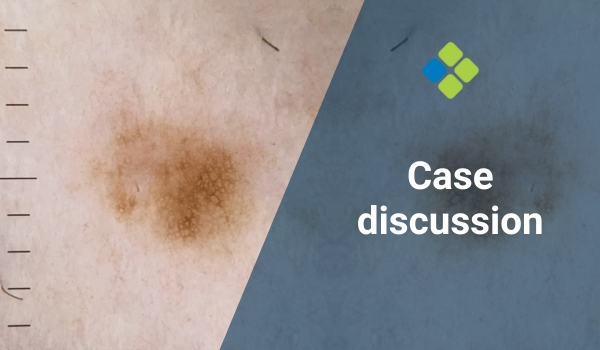How to manage cellulitis in primary care
Read a systemic approach to the management of cellulitis in primary care, encompassing diagnosis, antibiotic therapy, and monitoring for complications.
.jpg)
HealthCert Education
Cellulitis is a prevalent bacterial skin infection requiring prompt diagnosis and appropriate management to prevent complications.
This article is a guide to effective cellulitis management within the primary care setting. Its purpose is to equip general practitioners with the knowledge needed to navigate this dermatological condition effectively.
What is cellulitis?
Cellulitis is a bacterial infection affecting the deeper layers of the skin. Typically, it is caused by Streptococcus or Staphylococcus bacteria. It commonly manifests as erythema, warmth, swelling, and tenderness in the affected area. While cellulitis can occur anywhere on the body, it frequently appears on the lower extremities.
Diagnosing cellulitis
Clinical assessment plays a crucial role in diagnosing cellulitis. A thorough physical examination focusing on the characteristics of the skin lesion is essential. Key features include:
- Localised erythema,
- Edema,
- Warmth, and
- Tenderness
These are often accompanied by systemic symptoms such as fever and malaise. Differential diagnosis should consider conditions like erysipelas, stasis dermatitis, and deep vein thrombosis.
Laboratory tests like complete blood count (CBC) with differentials and blood cultures may be warranted in severe cases or when systemic involvement is suspected. However, in uncomplicated cases, diagnosis is primarily clinical, and imaging studies are not routinely indicated.
Treatment guidelines for cellulitis
Prompt initiation of appropriate antibiotic therapy is crucial in managing cellulitis effectively. The choice of antibiotics should target the most likely causative organisms, typically Streptococcus and Staphylococcus species.
The first step is to initiate empiric antibiotic therapy covering both Gram-positive cocci, such as beta-lactam antibiotics (e.g. cephalexin, dicloxacillin) or clindamycin.
The selection of antibiotics is based on the severity of infection, comorbidities, and risk factors for resistant organisms. Severe cases may necessitate hospitalisation and intravenous antibiotic therapy.
A complete course of antibiotic therapy typically lasts from five to fourteen days, depending on the clinical response and severity of the infection.
Other treatment measures
In addition to antibiotic therapy, adjunctive measures can aid in cellulitis management and promote optimal outcomes. These may include:
- Elevation of the affected limb to reduce edema and enhance lymphatic drainage.
- Pain management using analgesics as needed to alleviate discomfort.
Follow-up appointments are advised to monitor treatment response and ensure resolution of symptoms.
Potential complications
Cellulitis is often self-limiting, with appropriate treatment. However, complications such as abscess formation, necrotizing fasciitis, and systemic spread can occur, particularly in immunocompromised individuals or those with underlying comorbidities. Prompt recognition and intervention are critical in preventing adverse outcomes.
Cellulitis management in primary care requires a systematic approach encompassing accurate diagnosis, timely initiation of appropriate antibiotic therapy, and vigilant monitoring for complications.
– Dr Rosmy De Barros
For further information on this topic, you may be interested to learn more about the HealthCert online Professional Diploma program in General Dermatology.
Engaging with this blog can help meet your annual
|

How to claim your CPD hoursIf you consume educational webinars, podcasts, articles, or research on this blog, you can Quick Log CPD hours with the RACGP via the usual self-submission process. You will be asked to reflect on what you have learned, and you will require supporting evidence such as a screenshot.Download the RACGP’s guide to self-recording your CPD here. |
Read another article like this one: How to manage heat rash
References
Raff AB, Kroshinsky D. Cellulitis: A Review. JAMA. 2016;316(3):325-337. doi:10.1001/jama.2016.8825
Sullivan T, de Barra E. Diagnosis and management of cellulitis. Clin Med (Lond). 2018;18(2):160-163. doi:10.7861/clinmedicine.18-2-160
Ortiz-Lazo E, Arriagada-Egnen C, Poehls C, Concha-Rogazy M. An Update on the Treatment and Management of Cellulitis. Actualización en el abordaje y manejo de celulitis. Actas Dermosifiliogr (Engl Ed). 2019;110(2):124-130. doi:10.1016/j.ad.2018.07.010
Tianyi FL, Mbanga CM, Danwang C, Agbor VN. Risk factors and complications of lower limb cellulitis in Africa: a systematic review. BMJ Open. 2018;8(7):e021175. Published 2018 Jul 23. doi:10.1136/bmjopen-2017-021175

 1800 867 1390
1800 867 1390
-1.jpg)

-1.jpg)



